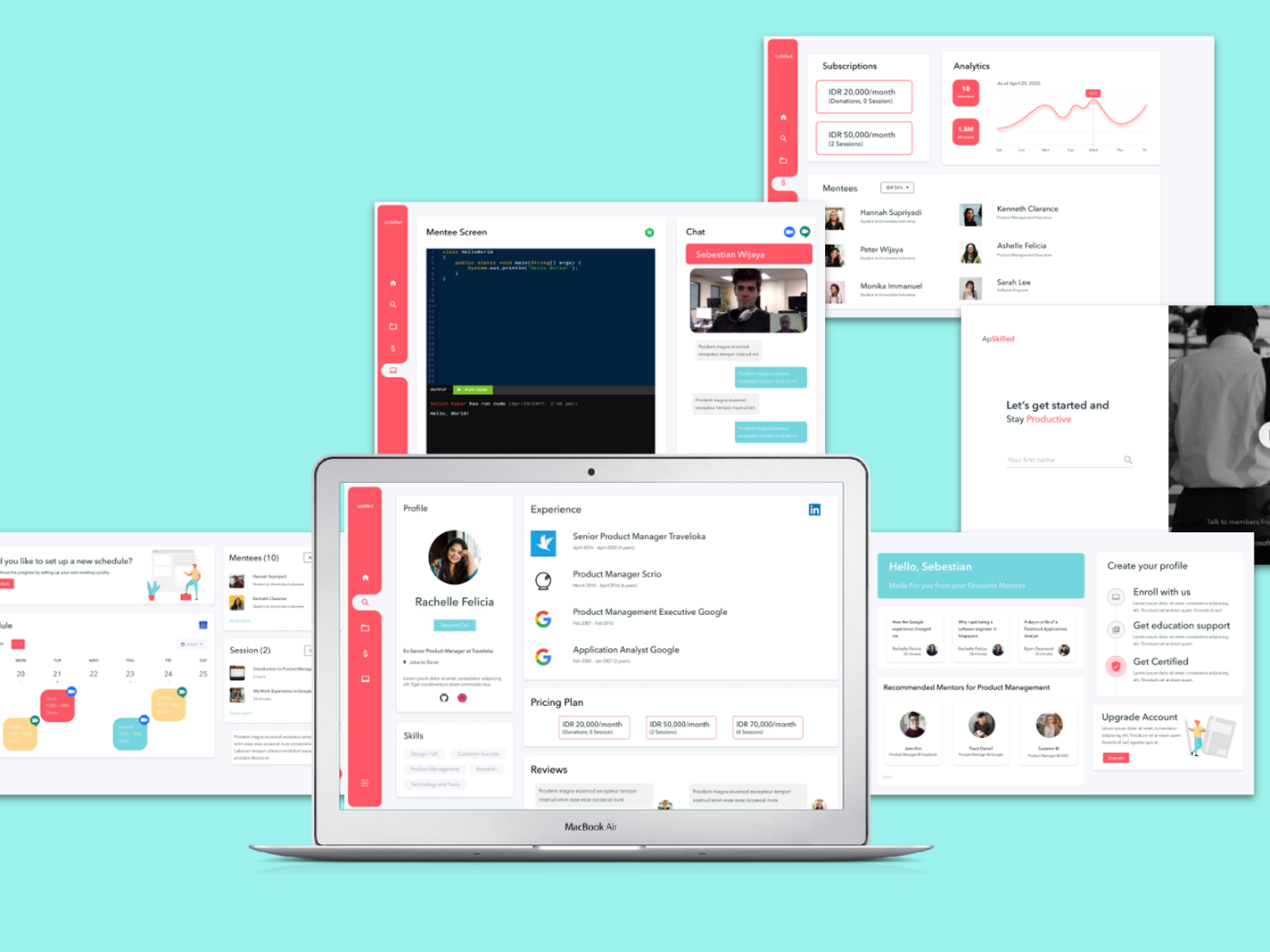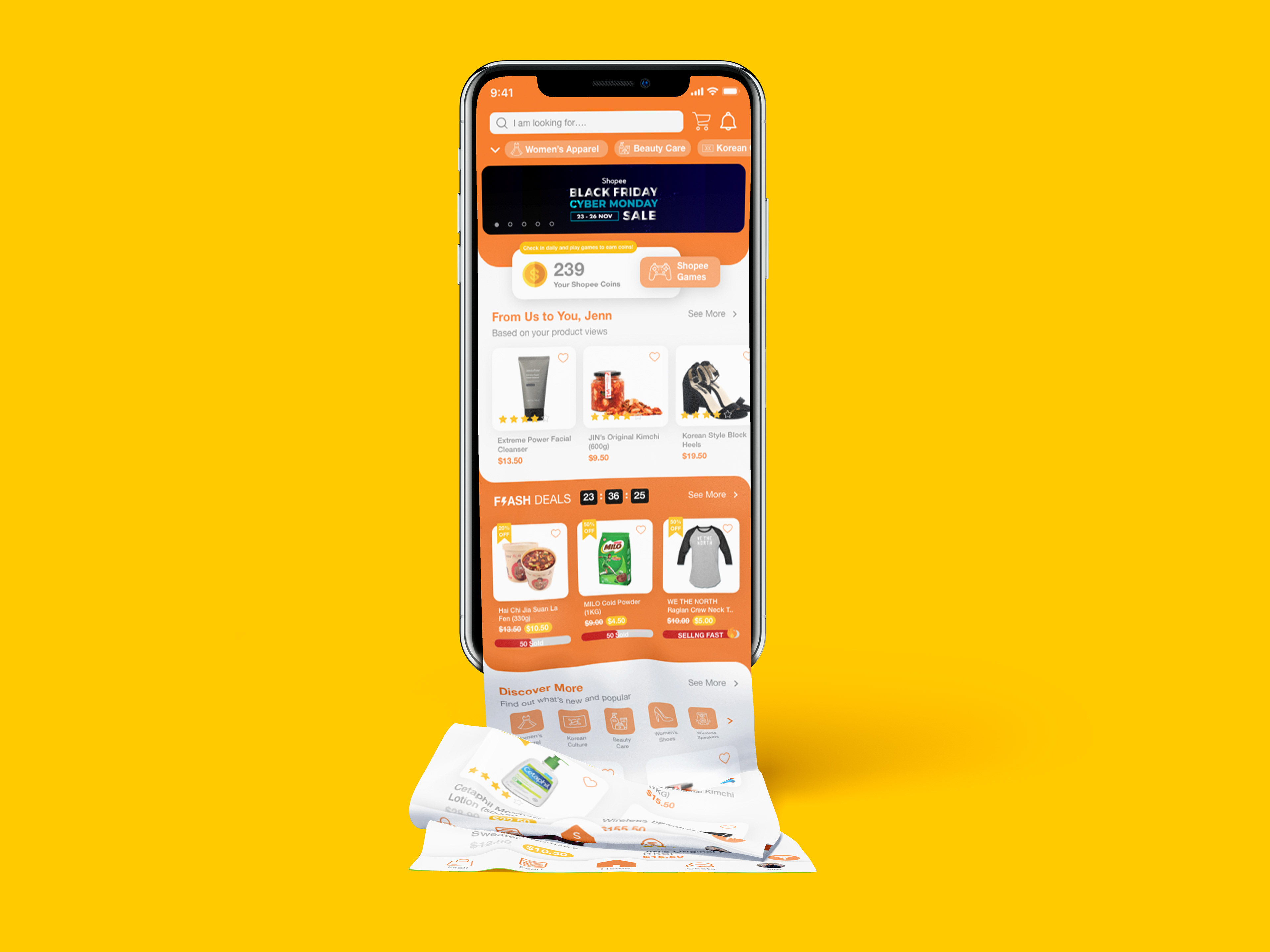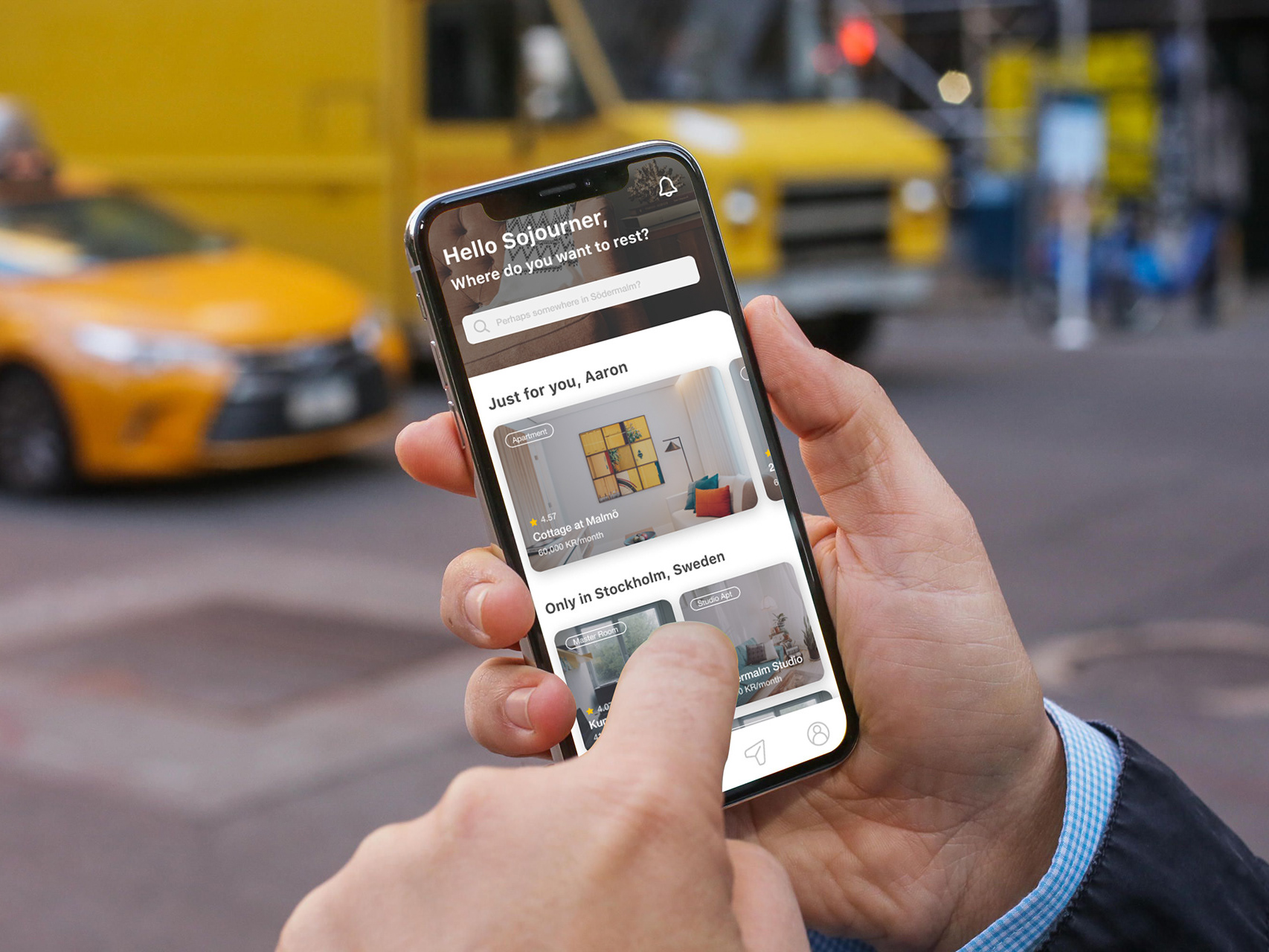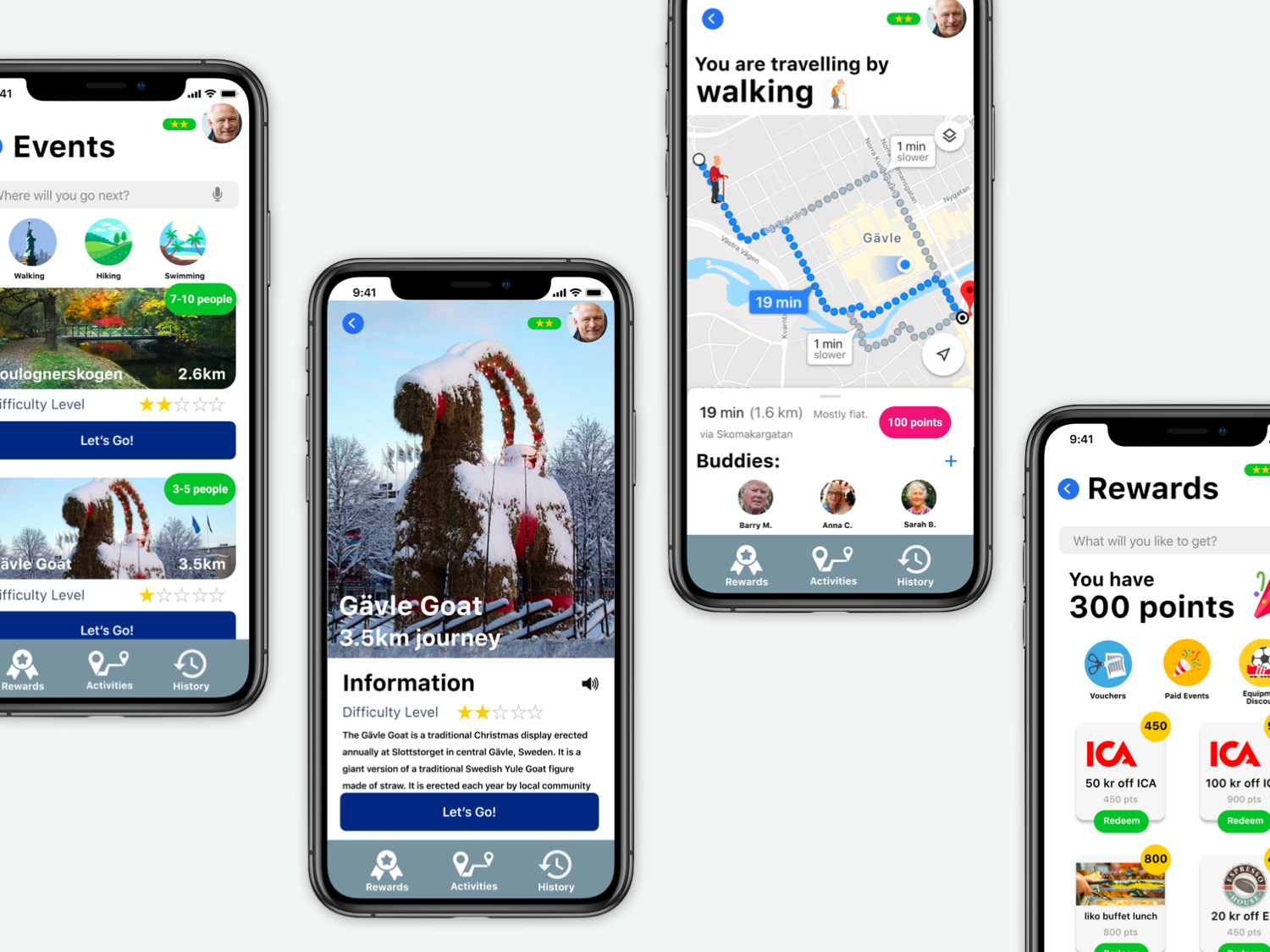CARO
OVERVIEW
This mobile application aims to simplify diet tracking for Singaporean/Asian seniors using food images, powered by Machine Learning & Artificial Intelligence.
This project is created as part of the Market Validation Module under the NUS Overseas Colleges (Stockholm) Programme, where my team is to observe a societal problem. create a solution and validate them in the real-world market.
ROLE
Product Designer and Researcher
Product Strategy, Idea Generation. Product Conceptualisation, Visual Design, UI/UX Design, User Discovery and Research, Market Validation
DURATION
Feb 2020 to May 2020
Background
The aging population continues to pose a problem for our societies as life expectancy increases and birth rates fall. This is especially so in a developed small island like Singapore, where the elderly (persons aged 65 years old and above) becomes 25% of the whole population. Yet, technology has not caught up to serve this growing group of users. As part of the market validation process, my team and I had decided to tackle this issue.
I was the sole product designer of the team along with 1 business developer and 1 product manager. I was responsible for the product conception, UI/UX design, while as a team we tackled user interviews and market validation together.
The whole process took 3 months, where majority of the time is used on user interviews to validate the problem faced by our target audience, followed by the validation of solution proposed. Here are some of the achievements accomplished.
1. Validation of the problem - My team and I were able to identify and revised 8 hypothesis regarding the problem and ideal solution through user interviews.
2. Executed End-To-End Design - I was able to effectively implement a design sprint to find out our target personas, ideate on the solution and test the solution through user interviews.
3. Get External Interest - My team and I received interest from a business advisor, AI scientist and software engineer to take this solution to the next step.
Understanding the Problem
The aging population continues to become a phenomenon and even more so in Asian societies as life expectancy increases due to better modern medicine and falling birth rates from couples who are getting married and having fewer or no children later compared to the previous generation.
Yet, as the older generation ages, current consumer technology such as smartphone applications are not catching up to meet a different set of needs. As people age, the realisation that a healthy diet is needed to maintain and improve one's health daunts upon this group of users. While diet-tracking apps are aplenty, there is an obvious lack of elderly-friendly alternatives.
My team and I conducted a brainstorming session to identify the pain points in current diet-tracking apps and the reasons behind low adoption of these apps among the elderly population.
1. Lack of subject knowledge - Growing elderly do not know what to eat as they grow older and have existing health conditions without a professional nutritionist. Elderly also need a different set of nutritional requirements, which existing apps do not cater for them.
2. Requires high user input - Existing applications are cumbersome, especially to the elderly with lower physical and mental capabilities as it requires regular and detailed tracking of food and drinks.
3. Extremely time-consuming - With more inputs come more time used to fulfil the inputs. This time used will be serve as a deterrent for elderly to cultivate this habit.
Target Audience
Before we can ideate for the problem, we have to identify the target audience for our solution. Our first target audience was the seniors group, aged 55 years old and above, as we will want to include the newer generation of seniors (from aged 55 to 65 years old) since they are more likely to be more tech-savvy and very likely to be our early adopters.
The second group we intended to target are the caretakers of the seniors with a higher clinical fragility scale. These seniors are likely to get help from caretakers in tasks such as preparing their meals. Hence, the decision making of these meals will lie on their caretakers.
Hypotheses and Market Validation
After deciding on the target segments, we proceeded to settle on 8 hypotheses to validate with our users. We conducted a total of 51 video calls and 196 audio calls over a period of 1.5 months. This included follow-up user testing interviews to validate revised hypothesis and my prototype. In total, we interviewed a total of 146 seniors aged 55 to 80 years old and 105 caretakers aged 22 to 68 years old with 4 overlaps between the two segments.
The following are the 8 hypotheses, as well as the revisions made after the first round of interviews.
1. People are more concerned about their diet as they grow older.
2. Caregivers/seniors find diet tracking a means to maintain or better their health.
3. Caregivers/seniors want to track the senior’s diet to maintain or better their health (Seniors are increasingly concerned about their health as they age).
4. Caregivers/seniors find it a hassle to use current diet-tracking apps to track their meals and find it difficult to integrate these food apps into their daily lives.
5. Caregivers/seniors want to track their diet but current diet-tracking apps are not user friendly, time consuming and inaccessible design-wise for both the caregivers and seniors.
6. (Initial) Caregivers/seniors are willing to pay or subscribe for an easy diet-tracking service specially catered to the needs of the seniors.
6. (Revised) Caregivers/seniors are willing to see catered advertisements appearing on the platform.
7. (Revised) Seniors with underlying health conditions require certain restrictions and therefore more attention to their diets by themselves or their caregivers.
8. (Revised) Seniors (including those that have underlying health conditions) and their caregivers would like to be recommended with meals that would be able to help them meet their health goals and are beneficial to their health.
We validated all 8 hypotheses, except for the initial hypothesis 6, in which we have revised it to better answer to our users' needs.
Defining the Problem Statement
After the first round of interviews, we are able to now define the problem statement for our users. Based on the responses we have defined this primary problem:
Seniors and caretakers are frustrated as they are not able to improve or maintain their health as they age due to the inability to cultivate the habit of tracking their diet as there are no elderly-friendly alternatives in the current market.
Defining the MVP and Prototype
Before we conducted our second round of interviews. I led a design sprint to decide on the features of the solution based on the problem statement and initial responses from the users about their ideal diet-tracking solution.
With that, we first have to come up with a vision of how our ideal solution should be with 4 factors:
1. Reliable - Our service should be reliable for seniors while giving caregivers a sense of security when gauging nutritional intake.
2. Seamless - Our user experience that should be designed to be intuitive for seniors who may not be very tech-savvy.
3. Convenient - Our service should have recommendations for meals that are catered to both seniors’ existing health conditions and their preferences.
4. Minimal - Our service should require minimal user-input information using a photograph of meal before consumption.
With these 4 factors, we also came up with 4 key features that our prototype should show to help our second batch of user testers understand our solution.
1. Input of health information - Users can include their health information including gender, age, height, weight and existing health conditions.
2. Mapping of their dietary intake a day and goals - Users are able to see their intake progress throughout the day and serve as a reminder if they are falling short or overshooting their calorie goals
3. User journey of capturing a meal - Users can see the seamless and minimal process to track a meal.
4. Recommendations of meals - Users are able to see recommended meals that match their nutritional intake and hence removing a decision step per meal while meeting their health goals.
Designs of Prototype
After deciding on the key features, it was time for me to start designing the screens. The aim is to provide an elderly-friendly interface with bright, big words and buttons, simple and encouraging language and graphics and overall clean UI.
Splash Screen
A simple splash screen with a background of healthy foods to instil an impression of healthy living for the elderly.
Onboarding Screens
The onboarding screens are kept to a few short questions which included name, gender, height, weight, existing health conditions such as high blood pressure, high cholesterol and diabetes.
Main Home Screen
Users are able to see a progress bar of the calories needed for the day. Past meals are also recorded and shown, as well as recommendations of meals for later in the day based on the number of calories left.
Capture Meal Screen
The act of tracking of the user's meal is meant to kept minimal and intuitive by using image recognition and calorie estimation models powered by artificial intelligence. Users just need to take a picture and the rest of the work is handled by a training model.
Confirm Meal Screen
As we know that the models may not be accurate 100% of the time, users are able to edit the contents by the models when they capture the meal. The algorithm is also to advice users to be more healthy.
Profile Screen
The profile screen allows the user to see a snapshot of their health profile. The user is also able to update and edit when new considerations are surfaced by their health care professionals.
Prototype Demonstration
I then made the demonstration video using Invision to show our users how Caro works.
Final Takeaways
While the module duration was relatively short, I was still able to accomplish a market validation and design sprint cycle with my team. Here are some takeaways I have gained from this experience.
1. Importance of getting relevant stakeholders - As the issue subject seems relatively far away from our own experiences, it was incredibly important to get the right stories by getting extensive interviews from people we need the most, as well as expert consultation from nutritionists specialised in the geriatric diet.
2. Practicing empathy in interviews - Many of our interviewees were older and were initially conservative in their answers especially when it concerned sensitive personal information. Through experience, we were able to conduct more in-depth interviews with questions and responses sounding more like a casual chat which allowed them to open up more.
3. Design thinking empowers useful products - We know that there are many similar products in the market, yet we realise that they do not serve a growing group of users. Hence, using the design thinking process, we are able to design something that we know our users will use, as we see the world in their shoes.



